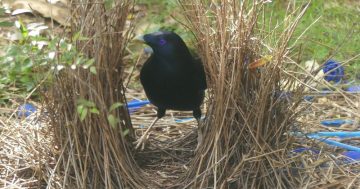Feedback is being sought for public input on a draft guide that would allow residents to utilise residential nature strips for small scale food production or gardens.
MLA Shane Rattenbury in his previous role as Minister for Territory and Municipal Services said “Nature strips are a key feature of Canberra’s garden city character. They are designed to present an attractive street frontage and are typically planted with grass and street trees,”
“In the face of issues such as climate change, peak oil and drought we must start to think more strategically about Canberra’s food security, which is largely reliant on produce imported from interstate. Simple measures that allow and encourage residents to grow their own food will have an impact in the longer term on Canberra’s reliance on imported produce.
“The current guidelines require residents to gain approval to utilise the nature strip, including to plant gardens or store materials temporarily.
“Today I have released a draft guide on the use of nature strips that will allow residents to utilise their nature strips for food production or small gardens. These guidelines aim to reach a balance whereby residents can use the nature strip, but without causing amenity or public safety concerns.
“The draft guide has been developed to clearly set out the respective responsibilities of residents and the ACT Government, as well as outline what is and isn’t permitted on nature strips. I am asking the Canberra community to provide feedback on the guide.
“The ACT Government is proposing to allow the use of food gardens in residential areas (aside from heritage and designated areas) where the speed limit is 50 km/h.
Mr Rattenbury said the guide also covers appropriate clearance zones to enable the safe use of footpaths and roads and even addresses issues such as what is appropriate to plant on nature strips in bushfire prone areas.
A summary of some of the key proposed general rules for nature strips are as below:
Approval not required
- food gardens, such as vegetables, up to 50 centimetres in height on residential streets with a speed limit of 50 km/h
- groundcovers, native grasses and shrubs up to 50 centimetres in height
- compacted gravel on up to 50% of the naturestrip, with the remainder being low level shrubs or grass
- temporary protective fencing for new grass/shrubs up to 13 weeks
- garden edging of stone, brick and timber up to 15 centimetres high.
Approval required
- irrigation systems, synthetic turf or bollards to prevent parking on the naturestrip
- temporary storage of landscape material for longer than two weeks.
Not permitted
- new trees, ponds, water fountains, permanent fencing, retaining walls, letterboxes, shipping containers, chicken runs, play equipment, boulders or pavers/concrete paths.
Mr Rattenbury said that residents are expected to mow nature strips, maintain them for safety and remove weeds or rubbish including from rain gardens which have been installed in the nature strips of new suburbs such as Crace to assist with catching and filtering stormwater.
“I recognise there will be a diverse range of views on the draft guide so I encourage community input so we can achieve the best possible balance. Public consultation is open until Wednesday 2 March 2016. The guide will be available online and an abbreviated version will also be prepared to help educate residents, particularly in developing areas.”
For more information, please visit www.timetotalk.act.gov.au









